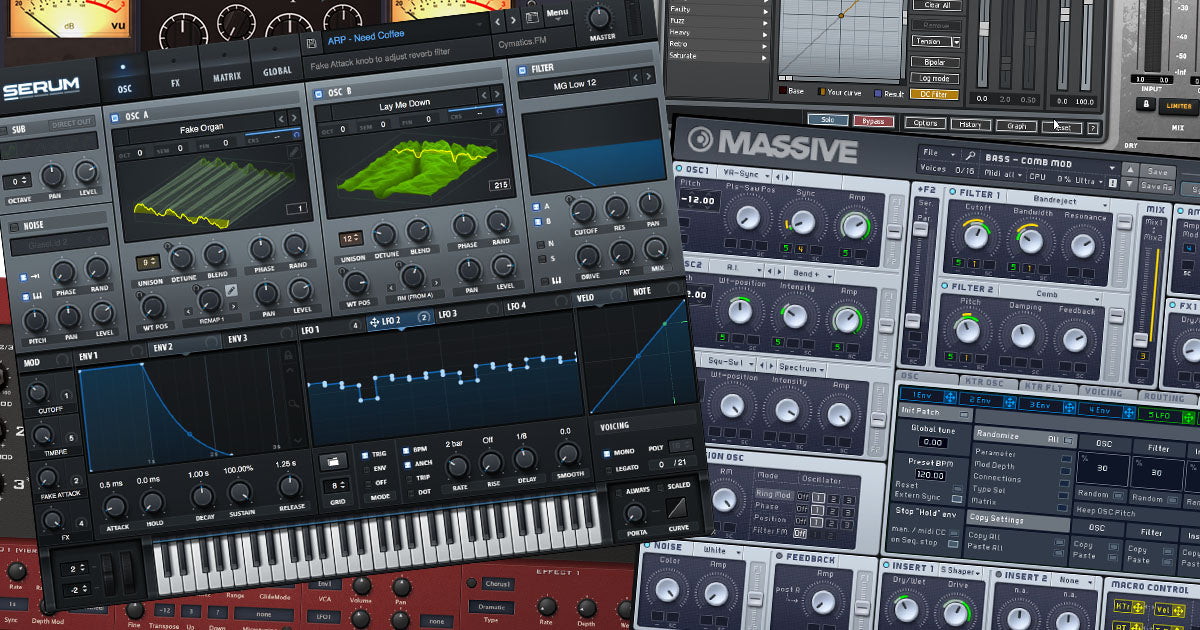Synth1 is one of the most downloaded VST plugins of all time, and it is no surprise as it has had quite a while to gain such a massive following. Created by Ichiro Toda and Daichi Laboratory, Synth1 is a virtual analog synth that was inspired by a synthesizer that came before it by the name of Clavia Nord Lead 2. A) Computer C DRIVE PROGRAM FILES VST PLUGINS b) Computer C DRIVE PROGRAM FILES (x86) VST PLUGINS 3) There is also confusion in the PROGRAM FILES (x86) as there is a STEINBERG folder where some of my plugins automatically file themselves under. This is confusing to me.
Step 1.1 Download the Virtual Instrument (VSTi)
From this page download the BassMidi VSTi 1.2 zipfile.

Step 1.2 Unzip that file to your VST plugin directory
Two Common directories for VST plugins:
- C:Program Files (x86)SteinbergVstPlugins
- C:Program Files (x86)Common FilesVST3
If either of these folders exist or if you have admin privileges on your computer you can unzip the contents of the zipfile to one of the above folders. Since I’m working on a computer with no admin rights I had to make a portable install of Reaper in this folder C:REAPER so I navigated to C:REAPERUserPlugins and made a folder called VST.
Step 1.3 Make sure Reaper knows where your VST has been unzipped to
- In REAPER, press [Ctrl] + P (Windows) / [Cmd] + [,] (Mac) to access Preferences.
- Go to Plug-ins > VST.
- Under “VST Plugin Path,” make sure that the path where you placed your plugins is listed (if not, add it)… see the screenshot for how I added C:REAPERUserPluginsVST after the other two default folders.
- Click on Re-Scan and your instrument should be available within Reaper.

Step 2.1 Time to download a Soundfont to open within the VSTi we just installed
A free GM/GS soundfont has been shared here Reality_GMGS_falcomod.sf2 (version 1.2)
Thanks to Falcosoft for sharing the soundfont on this page
Step 2.3 Unzip the Soundfont to a folder / directory where you will store your soundfonts
You might choose to make a folder called “Soundfonts” in a location where you keep your loops and other audio resources… perhaps within the Reaper folder or another area on your computer where you keep things organised.
Add Plugins To Reaper
Step 3.1 Time to try inserting a Virtual Instrument into Reaper using the VSTi and Soundfont we just downloaded.
Note: If Step 1.3 went smoothly and you Re-Scanned the VST folder Reaper should be able to find the new plugin… If not, try re-scanning or perhaps try restarting Reaper. If that fails you will need to check that the directory to where you extracted the VST files is included in the VST plugin folders that Reaper looks in (as per the screenshot in 1.3). If that fails you might need to ask me for some help 🙂
Insert > Virtual instrument on new track
Reaper Vst Plugin Folder Location
Display the Virtual MIDI piano (Alt+B)
Hopefully you can now hear the sound of a piano when you make use of the virtual MIDI piano
Download some free Soundfonts
Some links that might have some to check out…
- A Blog post listing tonnes of different Soundfonts
- On the Musescore website they have a few more soundfonts available.
Install Sforzando Sound Font player as it works on Mac or Windows
Adding Vst To Reaper
Bridging and VST Plug-in Run Mode
How To Install Vst Plugins Reaper
If you are running the 64 bit version of REAPER and wish to use older 32 bit plug-ins you will need to use bridging. By default, REAPER will attempt to work out for any plug-in that you use whether this bridging is required (Options, Preferences, Plug-ins, Compatibility). However, for any plug-in you can override this setting by right-clicking over the plug-in in the FX browser and choosing from the context menu Run as, and selecting one of three options which allow you to specify just how a plug-in is to be bridged. These options are:
Separate process: all bridged plugins for which this option is selected will be put into a single process, external to the main Reaper process. This has the advantage of minimising the resulting CPU load, but also carries a significant disadvantage: if one plugin is buggy and crashes the bridge process, all the other bridged plugins will die too.
Dedicated process: this puts each bridged plugin into a separate bridge process of its own. This will prevent a buggy plug-in from crashing the entire bridge, but it has the downside of increasing the overall CPU load.
How To Reinstall Vst Plugins Reaper Settings
Native only: is the default; the plug-ins are run inside the main Reaper process. Bridging can serve another useful function. Even though it is primarily intended for use with 32 bit plug-ins, you can if you wish also bridge (most likely in a dedicated process) any 64 bit plug-in. This has the effect of firewalling REAPER against any adverse effects that could potentially arise from a buggy 64 bit plug-in.
Vst Plugins Folder Reaper
A further choice, Embed bridge UI, determines whether the bridged plug-in GUI is displayed in the FX Chain wrapper window (or as a floating window) or is displayed in a completely separate (Windows / OSX) window. The choice is provided as some bridged plug-ins behave better in one context than in the other. Remember! You should not store 32 bit plug-ins in the same directory as 64-bit plug-ins.